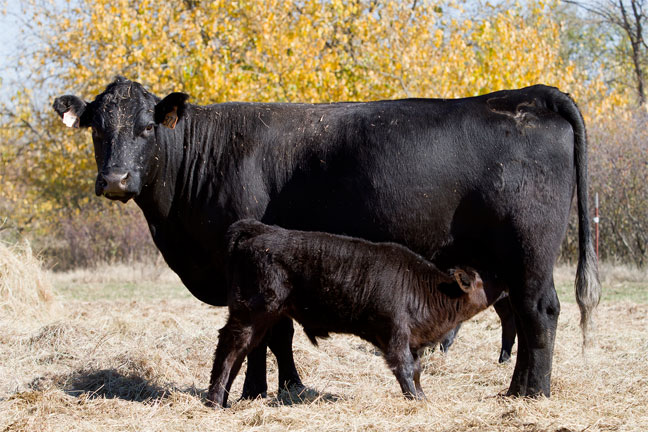
Agricultural News
Derrell Peel Talks Herd Rebuilding Considerations for Oklahoma Cattle Producers
Mon, 30 Dec 2013 10:11:11 CST

Derrell S. Peel, Oklahoma State University Extension Livestock Marketing Specialist, writes in the latest Cow-Calf Newsletter:
According to the latest Drought Monitor, 51 percent of Oklahoma has no drought, 30 percent of the state has slight to moderate (D0-D1) drought conditions, and 19 percent of the state is in severe to exceptional (D2-D4) drought. One year ago, 100 percent of the state was in severe to exceptional drought (D2-D4). Just three months ago, less than 8 percent of the state had no drought while 71 percent of the state had slight to moderate (D0-D1) drought and 21 percent had severe to exceptional (D2-D4) drought. This means that drought conditions have continued to moderate in much of the state but there has been relatively little improvement in the worst drought areas in the southwest, northwest and Panhandle. The state is currently divided with most of the eastern half devoid of drought conditions and most of the western half still experiencing some level of drought.
At this point is it is impossible to tell what conditions will be in 2014. While conditions are the best they have been in more than two years in some regions, drought conditions could redevelop. Regions that are still experiencing drought after more than three years, may see improvement or continued drought in 2014. In those areas where drought is eliminated or significantly moderated, producers face a mix of production and management considerations. Many producers have a financial need to increase production after two or more years of drought reductions. However, in many cases, forage resources need more time to recover which means that grazing must be carefully managed to promote recovery while efficiently utilizing available forage. For cow-calf producers, questions of how and when to rebuild the cow herd are tricky and require careful consideration. Fortunately, producers have several alternatives and considerable flexibility to devise a herd rebuilding plan.
The usual temptation post-drought is to quickly rebuild by buying bred cows/heifers or pairs to restore full production. This strategy may not be feasible or advisable for several reasons. First, it may not be consistent with managing forage for recovery and improved productivity. While more forage may be available seasonally, it may not be possible to immediately increase year-round forage demands. Secondly, market prices for females have already shown signs of reaching exceptionally high levels and may be financially infeasible, especially if many producers are simultaneously trying to rebuild. The reality is that there is likely not enough cows and heifers available across the country to support massive rebuilding in one year. The U.S. beef cow herd has decreased an estimated 1.85 million head since January, 2011. Recovery to pre-drought levels will likely take 3-4 years at least.
Calf prices are at record levels and the expectation of several years of strong calf prices is the principal incentive for herd rebuilding. However, the feeder cattle price structure also provides other incentives and possibilities for forage-based cattle production. The combination of higher feeder cattle prices and changes in feedlot incentives translates into market signals for more forage-based weight gain of feeder cattle. Thus, producers operating with a reduced cow herd should evaluate opportunities to retain calves for post-weaning stocker or backgrounding gain or to supplement cow-calf production with additional stockers. This may be the quickest way to increase ranch income and provide flexibility for optimal forage management.
The heifer market, in particular, may provide considerable income opportunity. While producers may desire to rebuild their own herds, they should not overlook the opportunities presented by the heifer market. Retained or purchased stocker heifers can be sold as needed due to forage and/or market conditions or retained for breeding with more market opportunities as bred heifers. The heifers may be calved and enter the herd or sold. The key is to focus on efficient production with available forage along with market conditions and not be preoccupied just with herd rebuilding. If the market suggests that someone wants heifers or cows much more than you do, it may be a good idea to let them have 'em!
One final rebuilding consideration is to consider just what the production target should be on your ranch. The fact is that many ranches were overstocked prior to the drought. In some cases it was just a matter of too many animals and in other cases it was due to increasing cow size over time. Producers should consider realistically how many and what size cows best fit their production resources and environment. Rebuilding might be a good time to change genetics and moderate cow size. The long term climate indications suggest that Oklahoma is more vulnerable to intermittent droughts in the next decade or two compared to the past 30 years. A more conservative stocking approach will enhance the ability to adjust to variable forage conditions with less financial impact. Combined cow-calf and yearling enterprises can provide enhanced production flexibility and income potential for many situations. Producers should be developing plans, not only for 2014, but also thinking strategically for the next several years.
WebReadyTM Powered by WireReady® NSI
Top Agricultural News
More Headlines...




















